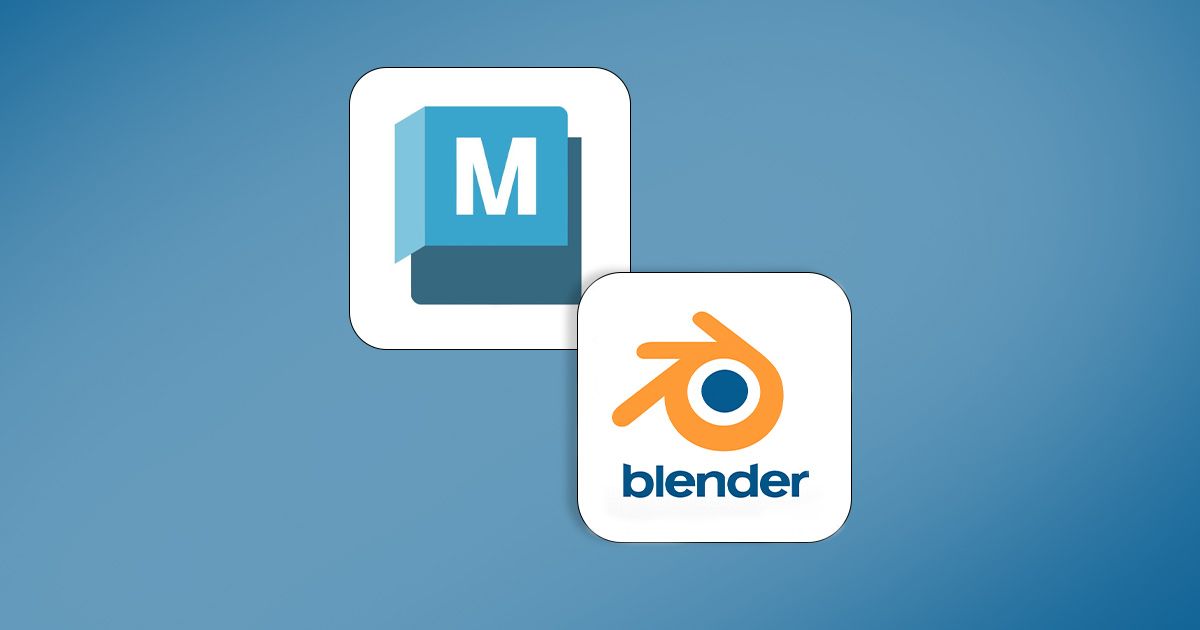Maya vs Blender: What to Choose for Your Animation Journey

Trying to decide between Maya and Blender for your next project? Explore the pros and cons of each software to make an informed decision.
Embarking on a journey into the world of 3D animation can be both exciting and daunting. With a plethora of animation tools available, one of the most common dilemmas for aspiring animators and seasoned professionals alike is choosing the right software. In this article, we'll dive into the age-old debate: Maya vs Blender. Let's explore the features, capabilities, and user experience of these powerful tools to help you make the best choice for your next project.

User Interface and Experience
First impressions matter, especially when it comes to navigating complex animation software. Maya boasts a sleek and professional interface that caters to the needs of professional animators. Its customizable layout allows users to tailor their workspace to suit their workflow, enhancing productivity and efficiency. On the other hand, Blender offers a user-friendly interface with intuitive navigation tools, making it accessible to beginners and seasoned professionals alike.
Comparing Workflow and Processes
When it comes to workflow and processes, Maya and Blender offer distinct approaches. Maya follows a more traditional pipeline, with separate modules for modeling, animation, and rendering. This structured workflow provides a clear roadmap for users, facilitating collaboration and project management. Blender, on the other hand, adopts a more integrated approach, combining all aspects of the animation process into a single interface. While this can streamline workflow for some users, others may find it overwhelming.
Modeling Capabilities
In terms of modeling capabilities, both Maya and Blender offer powerful tools for creating intricate 3D models. Maya's robust modeling toolkit includes advanced features such as NURBS modeling, sculpting tools, and advanced polygon modeling techniques. Blender, on the other hand, offers a comprehensive set of modeling tools, including sculpting, retopology, and procedural modeling options. Whether you're sculpting characters or designing architectural models, both programs provide the tools you need to bring your vision to life.

Materials and Texturing
When it comes to materials and texturing, Maya and Blender offer a wide range of options to suit your creative needs. Maya's node-based material editor allows for precise control over material properties, making it ideal for complex shading workflows. Blender's integrated material system offers a user-friendly approach to texturing, with a library of pre-made materials and procedural textures to choose from. Whether you're creating photorealistic renders or stylized animations, both programs offer the flexibility to achieve your desired look.
Animation and Rigging
Animation and rigging are fundamental aspects of 3D animation, and both Maya and Blender excel in these areas. Maya's robust animation tools include keyframe animation, procedural animation, and advanced character rigging capabilities. Blender offers a similar set of features, with a powerful armature system, inverse kinematics, and a variety of animation modifiers. Whether you're animating characters, objects, or vehicles, both programs provide the tools you need to bring your animations to life.
Rendering
Rendering is the final step in the animation process, and both Maya and Blender offer powerful rendering engines to bring your scenes to life. Maya's Arnold renderer is renowned for its speed and photorealistic quality, making it a favorite among professionals in the industry. Blender's Cycles renderer offers similar capabilities, with support for ray tracing, global illumination, and GPU acceleration. Whether you're rendering still images or animation sequences, both programs deliver stunning results.

In the eternal battle between Maya and Blender, there is no clear winner. Each program offers unique features and capabilities that cater to different needs and preferences. Whether you're a professional animator or a hobbyist, the choice ultimately comes down to your specific requirements and workflow preferences. Whichever program you choose, the key is to experiment, practice, and continue learning.
And if you're ready to dive deeper into the world of animation, be sure to check out our selection of 3D animation courses. Whether you're a Maya enthusiast or a Blender aficionado, there's something for everyone to explore. Start your animation adventure today!
Here’s more cool stuff to discover:
– Introduction to Autodesk Maya
– Introduction to 3D Design and Modeling with Blender





0 comments